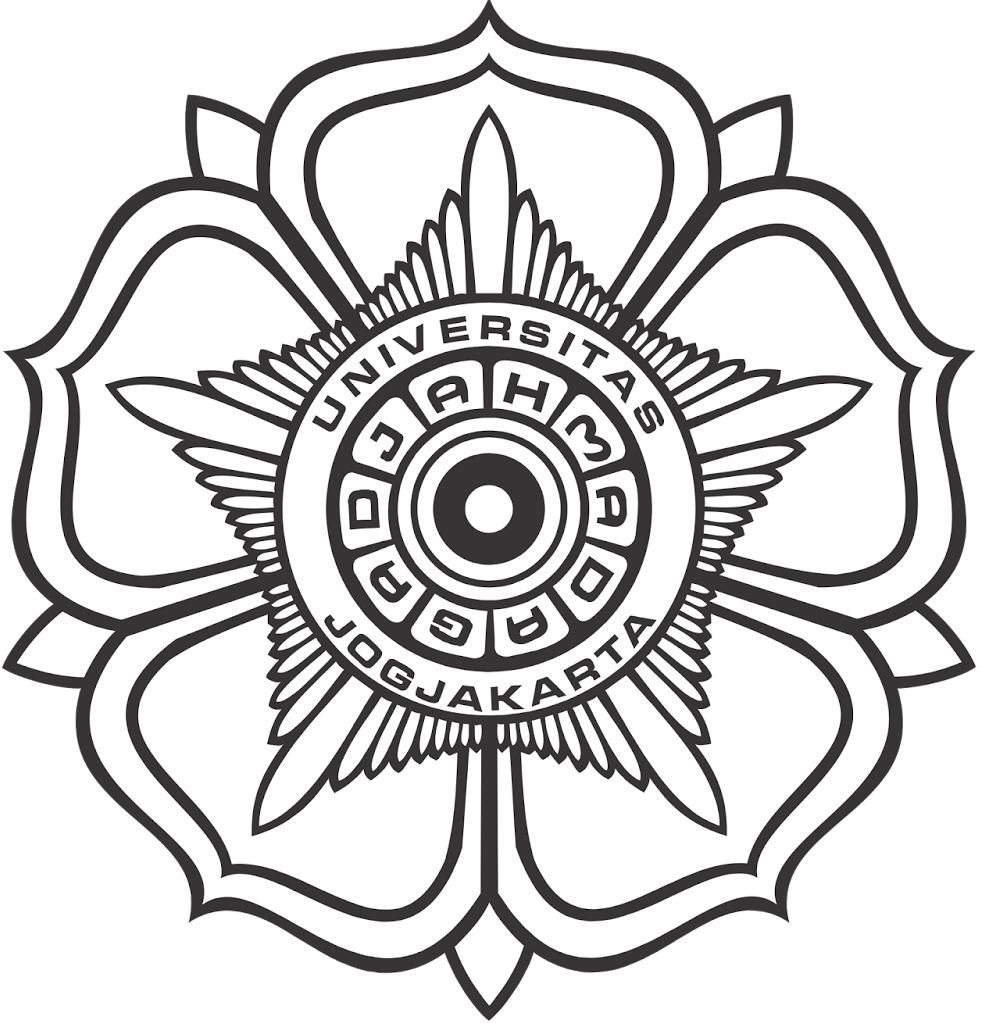THE EFFECT OF GINGER RHIZOME JUICE ON ACUTE TOXICITY OF PROPANOLOL AND QUINIDINE IN MICE
Abstract
The rhizome of ginger (Zingiber officinale, Rosc.) has been consumed by most people, as food ingredient or a traditional drug. In the previous research there was evidence that the ginger juice influenced the pharmacokinetics of propranolol (representative of drugs with high extraction ratio) and of sulfamezathine (as a model of sulfonamide drugs). The aim of this research is to study the effect of juice of ginger on the acute toxicity of propranolol and quinidine (a drug with a narrow therapeutic range). To achieve the aim of this study, mice were divided randomly into two groups, propranolol and quinidine. The each group was divided subsequently into controlled and pretreated groups. Mice in the controlled groups were given propranolol (I: 69 mg/kg BW; II; 82,80 mg/kg BW; III: 99,36 mg/kg BW; IV: 119,23 mg/kg BW) or quinidine (I: 265 mg/kg BW; II; 344,50 mg/kg BW; III: 447,85 mg/kg BW; IV: 582,25 mg/kg BW) through intraperitoneal injection, and those in pretreated group were pretreated with the ginger juice orally (5,6 ml/kg BW) an hour prior administration of propranolol or quinidine. The observations of the effect were done during the first three hours. The mice were killed and the vital organs were taken for histopathologic examination. The values of LD-50 were computed by Miller-Tainter Method (propranolol; LD-50controlled = 89,98 mg/kg BB dan LD-50treated = 87,51 mg/kg BB] [quinidine; LD-50controlled = 418,48 mg/kg BB dan LD-50 treated =331,93 mg/kg BB]. The results of this research showed that the ginger juice influences the acute toxicity of quinidine but the acute toxicity of propranolol.
Key words: ginger rhizome, acute toxicity, mice, quinide, propanolol
Full Text:
UntitledReferences
Anonim, 1968, The Merck Index, An encyclopedia of chemicals and drugs, Eight Ed., Merck and Co., Rahway, USA, 875, 903.
Brown, J.E., dan Shand, D.G., 1982, Therapeutic Drug Monitoring of Antiarhytmic Agents, Clinical
Pharmacokinetics, 8:125-148.
Follath, F., Ganzinger, U., dan Schuetz, E., 1983, Reliability of Antiarhytmic Drug Plasma Concentration Monitoring, Clinical Pharmacokinetics, 8:63-82
Hoffman, B.B., and Lefkowitz,, R.C., 1990, Adrenergic Reseptor Antagonist, in Gilman, A.G., Theodore, W.R., Alan, S., Taylor, P., (Ed.), Goodman & Gilman’s The Pharmacological Basic of Therapeutic, Vol I, 8th Ed., Mc. Graw Hill International Edition, New York, 233-234.
Mutschler, E., 1986, Dinamika Obat, diterjemahkan oleh Widiyanto, M.B., dan Ranti, A.S., ed ke-5, ITB, Bandung.
Purwantiningsih, 1999, Pengaruh Air Perasan Rimpang Jahe terhadap Farmakokinetika Sulfamezatin pada Tikus, Majalah Farmasi Indonesia, 14, 1, 250-255.
Stahl, E. 1985, Analisis Obat Secara Kromatografi dan Mikroskopik, Penerbit ITB Bandung. 194-195
Sudarsono, Pudjoarianto, A. Gunawan, D., Wahyuono, S., Donatus, L.A., Dradjad, Wibowo, S. dan Ngatidjan. 1996, Tanaman Obat, Pusat Penelitian Obat Tradisional UGM, Yogyakarta. 151-155
Susilowati, S. 1998, Farmakokinetika Propranolol Pada Kelinci Setelah Praperlakuan Perasan Rimpang Jahe (Zingiber officinale, Rosc.), Skripsi, Fak. Farmasi UGM, Yogyakarta.
Tjay, T.H., Rahardja, K., 1978, Obat-Obat Penting, Edisi 4, Dirjen POM Jakarta, 397-401
Wahjoedi, B. 1994. Beberapa Data Farmakologi dari jahe (Zingiber officinale, Rosc.). Warta Perhiba. 1-4.
Wolfson, S., dan Cohen, S.L.,1975, Beta-Adrenergid Bloking Agents, A Clinical Appraisal, in Donoso E. (Ed.),
Current Cardiovaskular Topics, Drug in Cardiology, 175-178, George Thieme Publisher, Stuttgart.
DOI: http://dx.doi.org/10.14499/indonesianjpharm0iss0pp312-315
Refbacks
- There are currently no refbacks.
Copyright (c) 2017 INDONESIAN JOURNAL OF PHARMACY

This work is licensed under a Creative Commons Attribution-ShareAlike 4.0 International License.
Indonesian J Pharm indexed by:







































